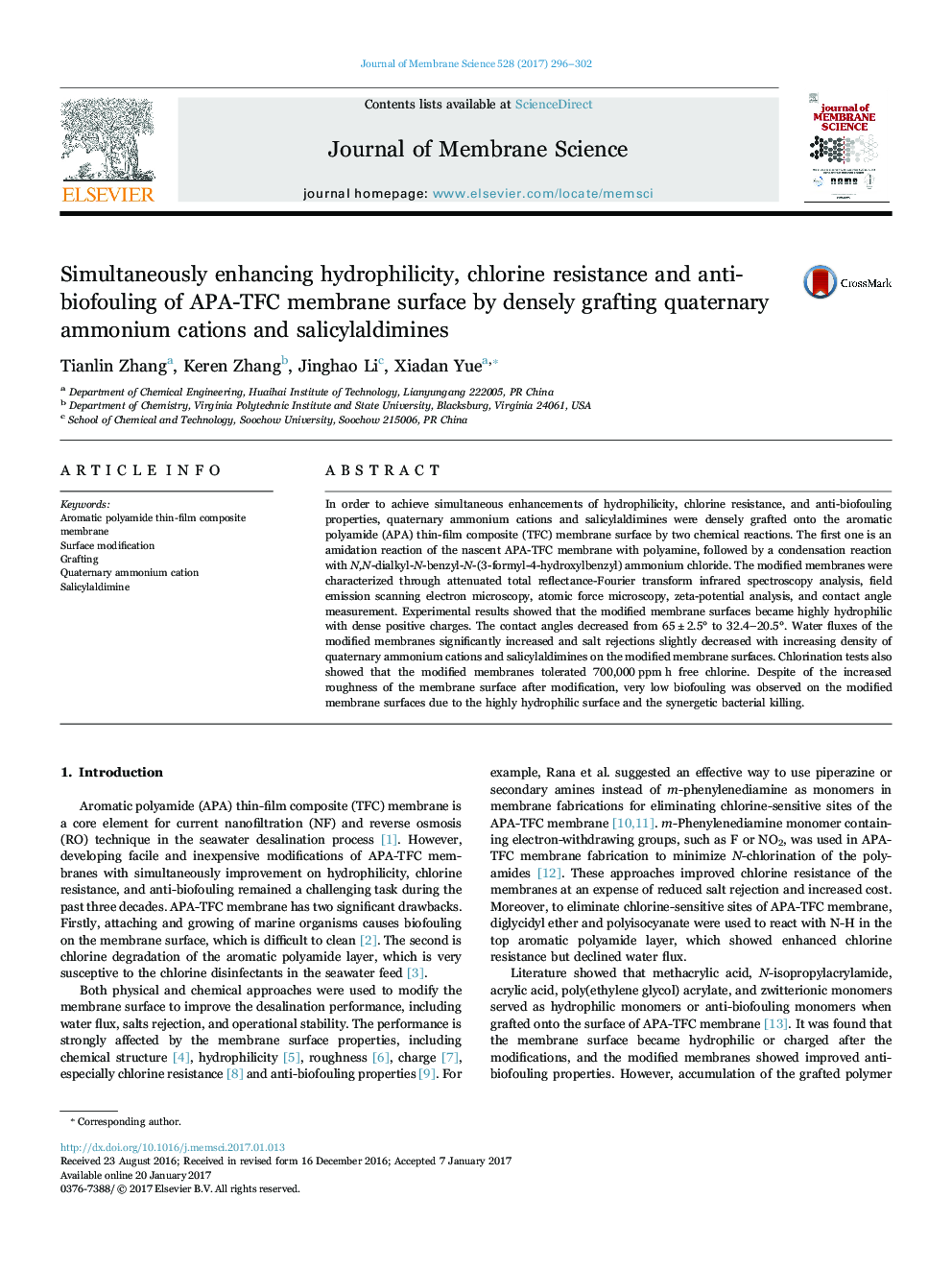| Article ID | Journal | Published Year | Pages | File Type |
|---|---|---|---|---|
| 4989172 | Journal of Membrane Science | 2017 | 7 Pages |
Abstract
In order to achieve simultaneous enhancements of hydrophilicity, chlorine resistance, and anti-biofouling properties, quaternary ammonium cations and salicylaldimines were densely grafted onto the aromatic polyamide (APA) thin-film composite (TFC) membrane surface by two chemical reactions. The first one is an amidation reaction of the nascent APA-TFC membrane with polyamine, followed by a condensation reaction with N,N-dialkyl-N-benzyl-N-(3-formyl-4-hydroxylbenzyl) ammonium chloride. The modified membranes were characterized through attenuated total reflectance-Fourier transform infrared spectroscopy analysis, field emission scanning electron microscopy, atomic force microscopy, zeta-potential analysis, and contact angle measurement. Experimental results showed that the modified membrane surfaces became highly hydrophilic with dense positive charges. The contact angles decreased from 65±2.5° to 32.4-20.5°. Water fluxes of the modified membranes significantly increased and salt rejections slightly decreased with increasing density of quaternary ammonium cations and salicylaldimines on the modified membrane surfaces. Chlorination tests also showed that the modified membranes tolerated 700,000 ppm h free chlorine. Despite of the increased roughness of the membrane surface after modification, very low biofouling was observed on the modified membrane surfaces due to the highly hydrophilic surface and the synergetic bacterial killing.
Related Topics
Physical Sciences and Engineering
Chemical Engineering
Filtration and Separation
Authors
Tianlin Zhang, Keren Zhang, Jinghao Li, Xiadan Yue,
